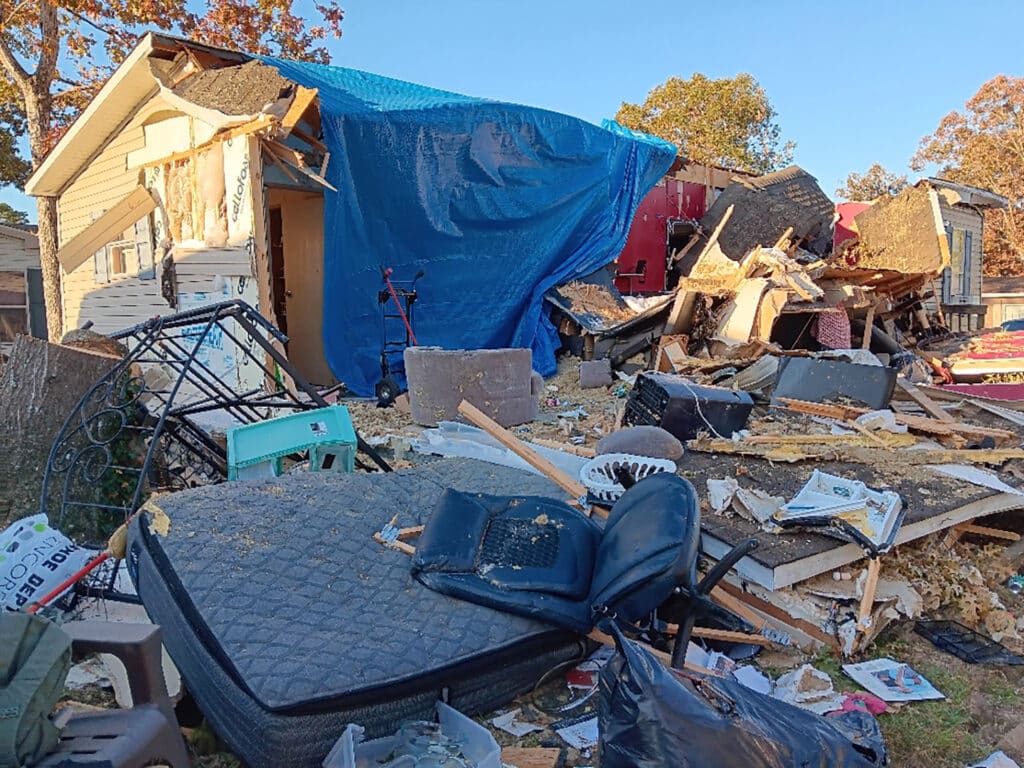Fort Worth man placed on waiting list for rare facial transplant.
FORT WORTH?Dallas Wiens bears little of his former image?at least not above the shoulders. But by all accounts, the image of God in him shines brighter than before. Soon, with the help of leading-edge medical science, a new face will adorn the 25-year-old burn victim.
Wiens learned on Oct. 8 that he is in line to become only the third person in the United States to receive a facial transplant that will radically transform his marred physical image and give him advantages unthinkable only a few years ago for someone with his injuries.
Wiens’ contact with a high-voltage electrical line while painting a church in November 2008 should have killed him. It left him blind and badly disfigured, but lucid and remarkably functional.
If a suitable facial donor is identified, Wiens would fly to Boston within hours to undergo the rare procedure at Brigham and Women’s Hospital followed by weeks and months of post-operative care in Boston and at Parkland Memorial Hospital in Dallas.
In a joint statement released by both hospitals on Oct. 13, Wiens announced the news he’d been waiting for: he was officially on the transplant list with the New England Organ Bank.
News coverage of Wiens’ case has focused on the breakthrough medical techniques that to the layman might seem more fitting for a futuristic novel than real-life medicine. But his press statement went deeper.
“My faith in Christ has driven me through the trials that I have faced. It has not been in my own strength that I have come to the point that I am today. I firmly believe that he will see me through any thing that is to come. There is no reason to allow a few hurdles to keep me from finishing ‘The Race.'”
BEATING THE ODDS
On Nov. 13, 2008, Wiens, his oldest brother and an uncle were finishing a painting job at the church he attended as a boy, Ridglea Baptist in Fort Worth, just a few blocks from the house he’d grown up in, when the cherry picker Wiens was painting from made contact with a high-voltage wire.
Rushed by helicopter 35 miles to Parkland’s world-renowned burn center, surgeons spent a grueling 36 hours over two days working to save Wiens’ life and his devastated facial structure. It was the worst burn case Parkland had seen in 30 years, doctors told the family.
Forty-eight hours later, doctors gave the family slim hope, his grandmother, Sue Peterson, said. Hours passed, then days and weeks. Bracing for the worst, doctors told the family that Wiens would likely be paralyzed from the neck down, would never speak or produce enough saliva to eat solid food.
Not only did Wiens survive, but once he awoke from a medically induced coma three months after the accident, he made unprecedented progress.
Wiens left the hospital in spring 2009, chunked his wheelchair into a storage shed that June, and today is walking six blocks at a time with a cane to help him locate landmarks in his Fort Worth neighborhood.
He’s up to 27 push-ups and is a regular at Starbucks, where a cap and sunglasses partly mask his disfigurement. He’s also taking college classes online, studying Scripture with audio and online Bible software, and following his beloved Oklahoma Sooners football team with his ears and his mind’s eye.
But most significant to Wiens are the spiritual blessings gained at the expense of his eyesight, his face as he knew it, and the sensation of a hug or kiss from his 3-year-old daughter, Scarlette.
“When you can’t feel your daughter’s kisses, that’s hard,” Wiens admitted.
Formerly far from God, in his words, the accident took him to the edge of eternity and back. Wiens repented before the Christ he was taught about and professed as a child. He also joined Ridglea Baptist, where his grandparents are members, and has weekly sessions with his pastor to discuss faith and other topics.
“In the midst of my despising God, he was right behind me, preparing me to do his work,” Wiens said.
For now, Wiens’ face is draped in skin and muscles painstakingly transplanted from his calf, thigh and back. These muscle flaps, as they are called, provided surgeons the ability to restore some structure and skin to his face. Also, his speech is remarkably clear relative to his injuries.
With the facial transplant, surgeons are confident Wiens will have most of the sensation and functionality restored to his face, though he would remain blind. One eye was completely devastated; the other remains intact and the ocular nerve is “alive,” but technology to restore sight in that eye is years away, Wiens said.
Doctors have told him he has a zero chance of resembling the facial donor and a 60 percent chance he will have some recognizable traits from his former face.
According to an information sheet provided by Brigham and Women’s Hospital, suitable facial donors may be no more than 10 years older nor less than 20 years younger than the transplant candidate, skin color and texture must be similar, blood types must match, and the donor match must be within a four-hour travel radius.
His surgery in Boston at the hands of Bohdan Pomahac, a plastic surgeon at Brigham and Women’s Hospital and director of its burn center, and subsequent care while there, will involve a transplant team of more than three dozen clinicians, including eight surgeons, as well as other doctors and nurses from multiple disciplines, from cardiology to infectious disease, Pomahac said.
His recovery in Boston will take weeks, followed by months of post-operative care at the hands of Jeffrey Janis, chief of plastic surgery at Parkland, who has cared for him since the accident, and Parkland’s team of specialists.
Wiens will eventually get dental implants and prosthetic eyes as well.
He will require about $2,000 a month in immunosuppressant drugs for the foreseeable future, something his health coverage will pay for. The surgery itself is paid for by a Defense Department grant and is part of a case study to benefit disfigured and burned service members?something Wiens, an Army veteran, is excited about.
“It’s not all about me and my story. I’m paving the way for others,” he said.
Wiens said he learned of his placement on the waiting list several days prior to the public announcement, and is now ready to travel to Boston with his grandfather, Del Peterson, when the phone call comes.
American Airlines flew Wiens to Boston for his last visit during the evaluation process and has already agreed to fly Wiens there again on the first available flight from Dallas.
“I cannot begin to express my gratitude to the teams at Parkland Memorial Hospital that have brought me thus far,” he said in the statement announcing his placement on the waiting list. “I have been making medical history from day one and as several chapters have been closed new ones are being written. I am glad to step into this newest chapter with faith and hope.
“I am supremely confident in the skills of each member of the facial transplant team at Brigham. Their desire to push the envelope is matched by my own. I am staring down the beginning of a brand new life; as far as I can see, this new life is full of hope and joy and that is how I fully intend to face it.”
Wiens has established a fund to offset costs not covered by insurance and to help future burn victims with medical care at Wells Fargo bank. Contributions to the “Dallas About Face Fund” may be made at any Wells Fargo location or by mailing a check to Ridglea Baptist Church, 6037 Calmont Ave., Fort Worth, TX 76116.
A short video featuring Wiens is accessible at youtube.com/sbtcweb.
 














